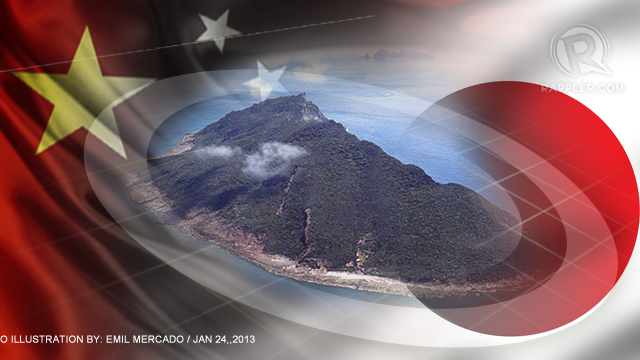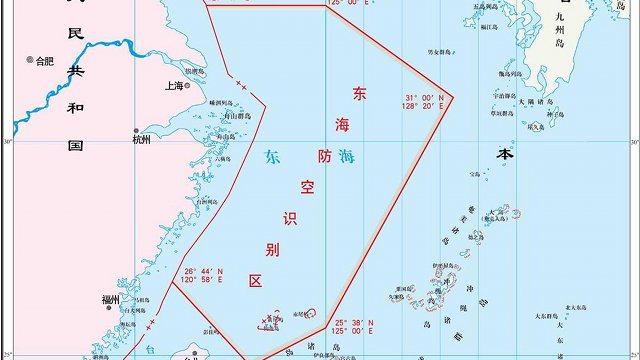SUMMARY
This is AI generated summarization, which may have errors. For context, always refer to the full article.

WASHINGTON DC, USA – Two US B-52 bombers flew over a disputed area of the East China Sea without informing Beijing, US officials said Tuesday, November 26, challenging China’s bid to create an expanded air defense zone.
The flight of the giant Stratofortress planes sent a clear signal that Washington would push back against what it considers an aggressive stance by Beijing in the region.
The move also represented a robust show of US support for Japan, which is locked in a mounting dispute with Beijing over disputed islands in the East China Sea.
The unarmed bombers took off from Guam on Monday on a scheduled flight, as part of what defense officials insisted was a routine exercise dubbed “Coral Lightning Global Power Training Sortie.”
“Last night we conducted a training exercise that was long-planned. It involved two aircraft flying from Guam and returning to Guam,” Pentagon spokesman Colonel Steven Warren told reporters.
No flight plan was submitted beforehand to the Chinese and the mission went ahead “without incident,” Warren said.
The two aircraft spent “less than an hour” in China’s unilaterally-declared Air Defense Identification Zone (ADIZ) and did not encounter Chinese planes, he said.
A defense official, speaking on condition of anonymity, confirmed to Agence France-Presse the two US planes were B-52 bombers. The Wall Street Journal first reported the bomber flight.
China announced the expanded air defense zone amid a growing territorial dispute with Japan over the island chain in the East China Sea known as Senkaku in Japanese and Diaoyu in Chinese.
The area also includes waters claimed by Taiwan and South Korea, which also have both denounced Beijing’s move.
Without taking sides in the territorial feud, UN Secretary General Ban Ki-moon meanwhile called on China and Japan to negotiate an end to their dispute.

Ban on Tuesday said tensions should be handled “amicably through dialogue and negotiations.”
Under the rules declared by China, aircraft are expected to provide a flight plan, clearly mark their nationality and maintain two-way radio communication to allow them to respond to identification queries from Chinese authorities.
Japan, the United States and several other governments promptly rejected China’s announced air defense zone after it was announced over the weekend.
The US State Department renewed its criticism Tuesday, saying China’s action appeared to be an attempt to “unilaterally change the status quo in the East China Sea.”
The move “will raise regional tensions and increase the risk of miscalculation, confrontation and accidents,” State Department spokeswoman Jen Psaki said.
Australia summoned Beijing’s ambassador to express its opposition and Tokyo called on airlines to refuse to accept China’s demands to abide by new rules when flying into the area.
Despite appeals from Tokyo, Japanese airlines said they were obeying Beijing’s new rules.
All Nippon Airways (ANA) said since Sunday, November 24, it has submitted flight plans to the Chinese and its affiliate, Peach Aviation, said it was doing the same “for now.”
Pentagon officials said the United States views the area as international air space and American military aircraft would operate in the zone as before without submitting flight plans to China in advance.
The territorial dispute over the islands has simmered for decades but in September 2012, Japan nationalized three of the islands, in what it portrayed as an attempt to avoid a more inflammatory step by a nationalist politician.
Beijing, however, accuses Tokyo of disturbing the status quo, and has sent ships and planes to the islands in a show of force.
In response, Japan has mobilized vessels and aircraft, raising fears the tensions could trigger an accidental clash.
Beyond the East China Sea, Beijing has taken an assertive approach to a number of territorial disputes, particularly in the strategic South China Sea.
In response to China’s growing military might and influence, the United States has sought to shift its strategic focus to Asia, planning to expand America’s military presence across the Pacific.
But repeated crises in the Middle East and budget pressures have often hampered Washington’s attempt at a so-called “pivot” to the Asia-Pacific. – Rappler.com
Add a comment
How does this make you feel?
There are no comments yet. Add your comment to start the conversation.